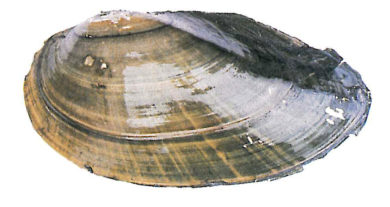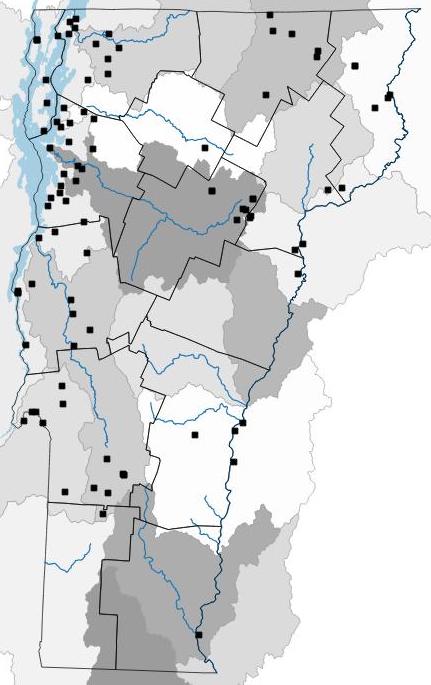The Eastern Floater appears to thrive in nutrient rich environments like those those created by manmade ponds. (CT DEP 2003)
Key Characteristics
- Size: Length up to 6 inches
- Shape: Ovate, elliptical, and slightly elongate. Thin, fragile shells with prominently elevated beaks. Shells are slightly inflated.
- Periostracum: Smooth and yellow, green, or blackish-brown with obvious growth lines. Sometimes faint green rays are present.
- Lateral Teeth: Absent
- Pseudocardinal Teeth: Absent
- Nacre: Blue or silver, sometimes with hints of yellow
- Similar Species: Alewife floater, creeper
Conservation Status
- State and Global Rank: S4 G5
- Vermont Endangered Species Law: Not Listed
- Vermont Wildlife Action Plan: Not Listed
Habitat
The Eastern Floater can be found in rivers, ponds, lakes, streams, and wetlands. This species prefers slow moving or still water in fine substrates.
Host Species
Common carp, bluegill, pumpkinseed, yellow perch, white sucker, rock bass, and the threespine stickleback
More Information
Range
The species’ distribution is probably more widespread than previously thought; relatively few lakes and ponds have been surveyed. It is found in rivers and streams, but appears to be most common in lakes and ponds. The largest individuals in Vermont have been found in Dead Creek (Addison), Dead Creek (Fairfield), and Goslant Pond (Marshfield).
Distribution map has locations where this species has been documented and digitized into the atlas database. Systematic surveys have not been conducted for many species and those surveys that have been conducted have been largely focused on endangered species. Therefore, in some cases, the actual distribution of freshwater mussels may be more extensive than what is presented here. Shaded areas are watershed sub-basins and river main stems are shown.








